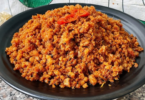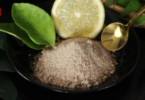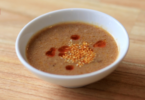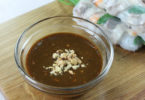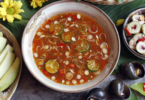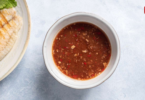Vietnamese Caramelized Fish Sauce (Mam Kho Quet) – A Flavorful Dipping Sauce

Imagine a sauce so rich and flavorful that it transforms simple steamed vegetables into a mouthwatering delight. Mam Kho Quet, also known as Vietnamese caramelized fish sauce, is a thick, umami-packed dipping sauce made from fish sauce, caramelized sugar, dried shrimp, and crispy pork fat. Originating from Southern Vietnam, this rustic dish was once a humble meal for farmers but has now become a beloved specialty enjoyed in homes and high-end restaurants alike.
What is Mam Kho Quet?
Mam Kho Quet, also known as Vietnamese Caramelized Fish Sauce, is a rich, thick, and umami-packed dipping sauce that originated in the Mekong Delta region of Southern Vietnam. Traditionally made with fish sauce, caramelized sugar, dried shrimp, and crispy pork fat (top mo), this sauce is slowly simmered until it develops a sticky, concentrated texture with a perfect balance of salty, sweet, and smoky flavors. Unlike the typical thin Vietnamese dipping sauces, Mam Kho Quet is deeply flavorful and packed with texture, making it an ideal companion for steamed vegetables, crispy rice crackers (com chay), and plain rice. Originally a humble dish among Vietnamese farmers, Mam Kho Quet has grown into a beloved staple of Vietnamese cuisine, even appearing in upscale restaurants as a gourmet dipping sauce. Its bold taste, crispy pork bits, and rich caramelized goodness make it an irresistible addition to any meal.
Key Ingredients of Vietnamese Caramelized Fish Sauce
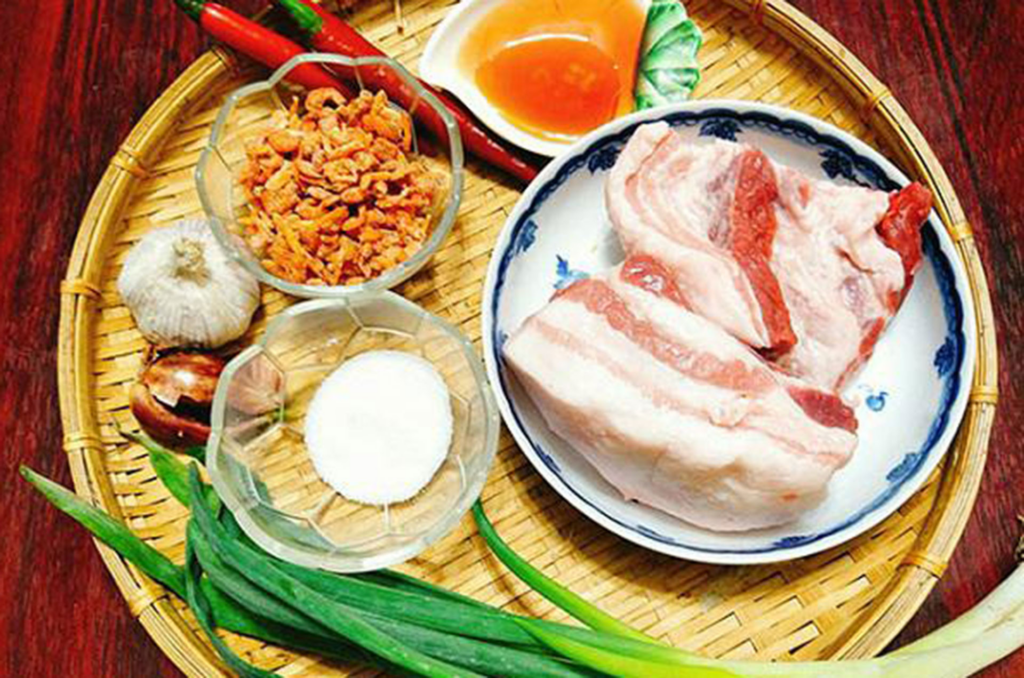
Essential Ingredients:
- 3 tbsp Fish Sauce
- 2 tbsp Palm Sugar (or White Sugar)
- 2 tbsp Dried Shrimp.
- 3 tbsp Pork Fat (Top Mo)
- 2 cloves Garlic, minced
- 1 Shallot, minced
- ½ tsp Black Pepper
- 1 Fresh Chili, sliced (or ½ tsp Chili Flakes)
- 2 tbsp Water (or Coconut Water)
Optional Add-ons:
- ½ tbsp Lime Juice
- ½ tbsp Tamarind Paste
- 1 tbsp Mushrooms (for Vegan Version)
Step-by-Step Process to Make Mam Kho Quet
Step 1: Prepare the Crispy Pork Fat (Top Mo)

- Heat a pan over medium-low heat and add the diced pork fat.
- Stir occasionally and let it render until golden and crispy (about 10-15 minutes).
- Once done, remove the crispy pork bits (top mo) and set them aside.
- Keep 2 tablespoons of the rendered fat in the pan for extra flavor.
Step 2: Sauté the Aromatics & Dried Shrimp
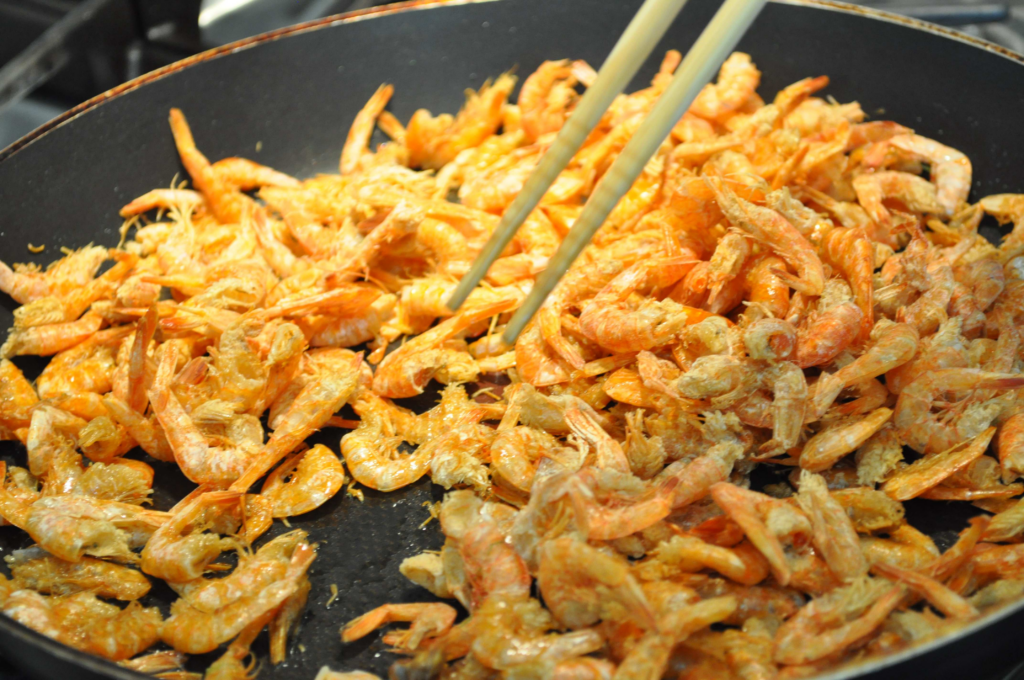
- In the same pan with pork fat (or oil), add minced garlic and shallots.
- Sauté for 1-2 minutes until fragrant and lightly golden.
- Add the drained dried shrimp and stir-fry for another 2 minutes until slightly crispy.
Step 3: Caramelize the Sugar for a Deep Flavor

- Push the shrimp and aromatics to one side of the pan.
- Add sugar to the empty side and let it melt over medium-low heat.
- Stir occasionally until the sugar turns golden brown (this takes 1-2 minutes).
Step 4: Add Fish Sauce and Simmer

- Slowly pour fish sauce into the caramelized sugar while stirring.
- Add water (or coconut water) to help thin out the sauce.
- Stir well and let it simmer on low heat for 5-7 minutes until slightly thickened.
Step 5: Final Seasoning and Thickening

- Add black pepper and chili for extra spice and aroma.
- Toss in the crispy pork lard and mix well.
- Continue simmering for another 3-5 minutes until the sauce becomes thick and sticky.
- Turn off the heat and let it rest for 2 minutes before serving.
Pro Tips for Making the Best Mam Kho Quet – Secrets from My Grandmother
– Use High-Quality Fish Sauce – The Soul of the Dish
- Always choose premium fish sauce (40°N or higher) for deeper umami and richness.
- Avoid low-quality, mass-produced fish sauce, which can be too salty or artificial.
- My grandmother prefers traditional Vietnamese fish sauce from Phu Quoc or Nha Trang.
– Slow-Render the Pork Fat for Maximum Crispiness
- Cut pork belly or fat into small cubes and cook on low heat until golden brown.
- Do not rush the process; slow rendering ensures the top mo (crispy pork lard) is crunchy and flavorful.
- Strain and save the rendered pork fat for sautéing aromatics—it enhances the overall flavor.
– Caramelize the Sugar Properly – The Secret to a Beautiful Sauce
- Caramelizing the sugar slowly over low heat prevents bitterness.
- Stir only when needed; once the sugar turns golden brown, quickly add fish sauce to stop it from burning.
- If the sugar burns, start over—burnt caramel will ruin the dish.
– Simmer on Low Heat Until Thick and Sticky
- Never cook on high heat—it evaporates too fast and makes the sauce too salty.
- Simmer gently on low heat for at least 10 minutes until thick and glossy.
- Stir occasionally to prevent sticking and burning.
– Choose the Right Cooking Pot for Best Flavor
- Traditionally, my grandmother always makes kho quet in a clay pot (noi datt).
- The clay pot retains heat well, allowing the sauce to slowly thicken and develop deeper flavors.
- If you don’t have a clay pot, use a heavy-bottomed pan to prevent burning and ensure even cooking.
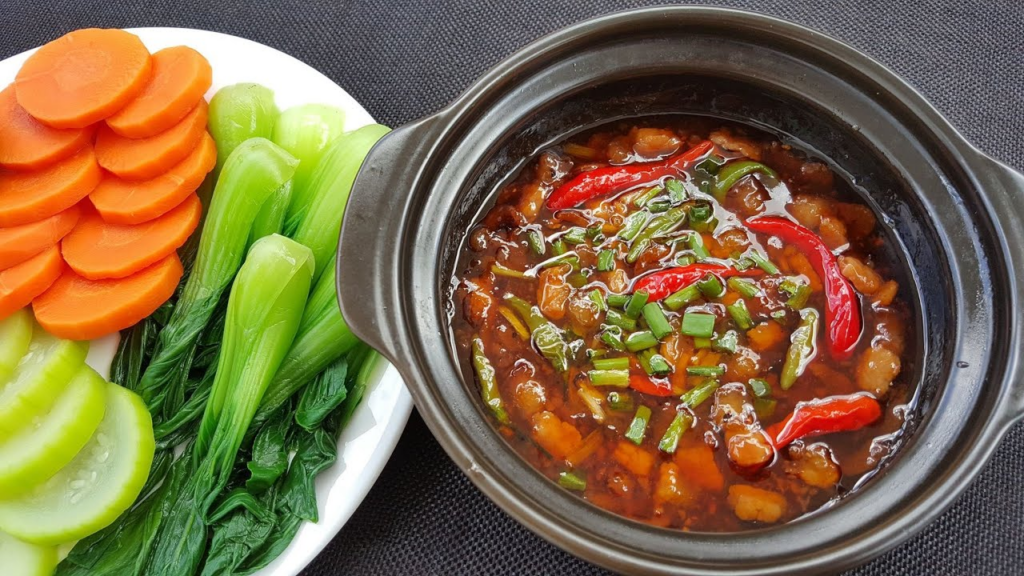
Conclusion:
Mam Kho Quet is more than just a sauce—it’s a symbol of Vietnamese culinary tradition. Originating from humble beginnings in Southern Vietnam, it has evolved into a beloved dish that enhances everything from steamed vegetables to crispy rice. The perfect balance of sweet, salty, and umami flavors, combined with its thick, caramelized texture, makes it an irresistible dipping sauce that elevates any meal.
Ready to experience the rich, caramelized flavors of Vietnam? Gather your ingredients and try making Mam Kho Quet at home! Enjoy it with steamed vegetables, crispy rice, or plain rice, and discover why this Vietnamese caramelized fish sauce is a favorite across generations. Share your cooking experience with VNIFood! Tag us on social media and show how you enjoy this delicious Vietnamese classic!
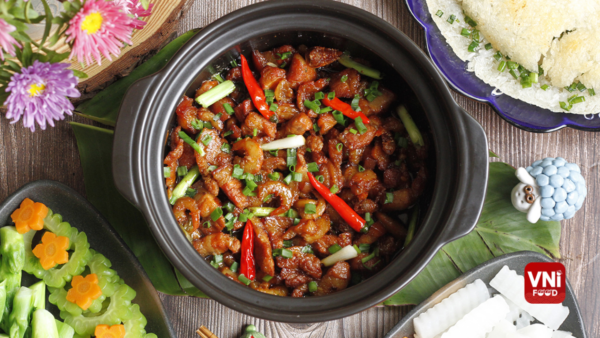
| Prep Time | 10 minutes |
| Cook Time | 25 minutes |
| Servings |
people
|
- 3 tbsp Fish sauce
- 2 tbsp Palm Sugar (or White Sugar)
- 2 tbsp Dried shrimp
- 3 tbsp Pork Fat (Top Mo)
- 2 cloves garlic
- 1 shallot
- ½ tsp Black pepper
- 1 Chili
- 2 tbsp Water
- ½ tbsp Lime juice
- ½ tbsp Tamarind Paste
- 1 tbsp mushrooms
Ingredients
|

|


